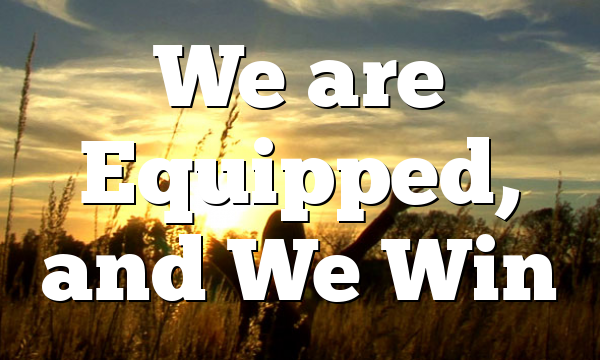Click to join the conversation with over 500,000 Pentecostal believers and scholars
Click to get our FREE MOBILE APP and stay connected
| PentecostalTheology.com



1
Where Do We Go From Here?
It has been
suggested many
times in recent
years
that classic Pentecostalism and its sister in the Historic
churches,
charis- matic renewal, are at a crossroad. Pentecostalism has arrived at this
point
some
eight
or more decades after it first
erupted
in the US, having
made some movement from a
religion
of the store- front,
tent
meeting,
and brush
arbor,
to a position of reasonable respectability , glamorous
Christian
Centers,
and ever increas- ing
institutional
power.
Charismatic
renewal,
in the assessment of Richard
Quebedeaux
as described in his book The New Cha- rismatics II
(San
Francisco:
Harper
&
Row, Publishers, 1983), p.
239 “had ‘run out of steam’
by
the late 1970s – but not out of abiding significance.”
To be at a crossroad is not
necessarily
bad.
It,
in
fact,
offers ample opportunity
for one to assess
past experience,
to take stock of
present strengths, weaknesses,
and
resources,
and to plot
future direction. To be at a crossroad and not to take the opportunity
for reflection and self evaluation is to miss a
pre- cious moment for continued
growth
and a chance to make informed decisions.
This
past year
three articles which tend to underscore the reality
of the
present
crossroad have made their
way
into
print in different
theological journals.
Carl-Erik
Sahlberg
has
pub- lished an abstract of his dissertation
completed
at the
University of
Uppsala
in Sweden. It is a look
back,
in which he assesses the transition “From
Ecstacy [sic.]
to Enthusiasm: Some Trends in the Scientific Attitude to the Pentecostal
Movement,” Evangel- ical Review
of Theology
9:1 (January, 1985), 70-77. Prior to 1970,
the secular scientific
community
had treated Pentecostal- ism in a
negative light,
but he
notes,
since 1970 the scientific attitude toward Pentecostalism has
changed significantly
in its portrayal
of Pentecostals and their
practices.
He attributes this to Pentecostalism’s
( 1) rapid growth, (2) changing sociology, (3) self-awareness,
and
(4)
the rise of charasmatic renewal. While we may find
Sahlberg’s
observations to be of interest in a variety of ways, it is significant to note that he does raise some substan- tial issues not the least of which is related to the roots of Pente- costalism. Are Pentecostals
changing
so
rapidly
from who
they were that
they
are in
danger
of
forgetting
their raison ditre? How much
change
is good? How fast should it occur?
And,
what kinds of
changes
are
right
for the
present?
A second article, this one
by
John
Ponter,
looks at “The Charismatic Movement,” The
Expository
Times 96:8
(May,
1
2
1985), 228-233,
and assesses both
past history
and
contempor- ary
needs. Its
place
as the fourteenth article in a
regular
series titled First Aid in Pastoral Care demonstrates that there are weaknesses in addition to the
many strengths
of the movement which remain with it.
Among
those weaknesses which the author has chosen to
highlight
are
(1) questions of exclusivism, elitism,
and
triumphalism
over the
expression
of what consiti- utes a legitimate experience of the
Holy Spirit, (2) questions
of appropriate
Biblical models of authority and excesses of certain kinds of authoritarianism,
(3) questions
of
spiritual maturity and
personal identity,
and
(4) questions
of world view.
Ponter has made some modest
suggestions,
but it is clear that many
of these
problems
confront Pentecostalism in much the same
way
that
they
exist in charismatic renewal. These issues need continued attention
by everyone
concerned if the cross- road is to become a valuable nexus for these movements and the larger church,
for
history
and
posterity.
Walter
Hollenweger,
known foremost for his work The Pen- tecostals
(Minneapolis: Augsburg, 1972)
as well as for his flair at
painting
the broad
sweep,
has contributed a reflective
piece titled “After
Twenty
Years’ Research on
Pentecostalism,” Theology
87 ( 1984), 403-412. While he is interested in the
past
as well as the
present
of the
movement,
he is also concerned with its future. Where will it
go, indeed,
where should it
go
in the decades ahead? He
projects
that
by
AD 2000 there should be nearly
as
many
Pentecostals on earth as there are in all other Protestant denominations
combined,
and the vast
majority
will be,
in fact
already are,
Third World Christians. In what
way(s) will their
participation
in the movement affect both faith and practice?
Hollenweger
raises
questions regarding
the
integration
of doctrine and
praxis
and notes the
growing
distance between the two in some cases.
Similarly
he raises
questions
of authority; the age
old
struggle
between charismatic
leadership
and institu- tional,
ecclesial structures is still alive. But, he raises
hopes,
too. Is
there,
for instance, a creative and
dynamic
ecumenism avail- able in charismatic renewal?
And,
is there a role for the Third World? Do
typical
Western and
Two/thirds
World mission policies
need further refinement or
rethinking altogether?
And where do the
many indigenous
movements fit in all of this? There
is, indeed, hope
as Pentecostalism and charismatic rene- wal
ponder
the future at the crossroad, but it is a
hope
which needs to take
seriously
the contribution of all Pentecostals and charismatic Christians. As
Hollenwager puts it,
either ” …
‘
2
3
Christians are successful in
finding
a new
unity,
which is not based
(or
at least
entirely based)
on the traditions of the West and its
organizational models,
or we will face a split in Chris- tianity
which will have more
painful consequences
than the
split between Catholics and Protestants
(p. 412).”
The
present
issue of Pneuma includes four articles which raise these and other
questions
for those who face the crossroad. Grant
McClung
like
Sahlberg,
has chosen to
survey
attitudes toward Pentecostalism
through
the mid-1980s. His focus is upon
the Church Growth Movement and its
growing
awareness of and
appreciation
for Pentecostalism. It is a movement which has been
changed
as much
by
its
exposure
to Pentecostalism as it has contributed to Pentecostal mission
policies.
What has Pentecostalism learned for the Church Growth movement that will now better inform its own future?
While one would not consider Romania to be a
part
of the Third
World,
it provides
nonetheless,
an
exciting example
of a church
developing
in a relatively isolated
setting,
untouched
by most of Western Pentecostalism for
nearly
half a century. David Bundy
has
provided
an historical and
literary survey
of Roman- ian Pentecostalism which has, in spite of
repressive government attitudes
grown
to
nearly
a quarter million members and adher- ents. It has also
developed
a
reasonably sophisticated
level of theological scholarship.
As Pentecostalism faces the
crossroad, what
insights might
these brothers and sisters
bring
to their counterparts
in the Western World? What
might they
teach the Pentecostal movement in the West about
prosperity,
about work and witness, about
authority
and
structure,
about free- dom and life in the
Spirit
under an
antagonistic government?
In what
way(s)
have
they
come to
express
their
spirituality
and how
might
it contribute to a more
fully
orbed western spirituality?
Walter
Hollenweger
noted in general terms the
importance
of genuine
ecumenism for the Church at the close of this
century. Jerry Sandidge
addresses the
subject specifically by reviewing the status of the now
decade-long
Roman
Catholic/
Pentecostal Dialogue,
a bilateral set of talks aimed at
furthering
communi- cation between two
disparate yet
sometimes
disarmingly
related traditions in the Church. The fact that the
participants
have “re-uped”
for a third
quinquennium
of talks
provides hope
for the future. But to date there has been no
official participation by any
American Pentecostal denominations. The door stands open,
and one can
only
wonder what
might happen
were
past hurts allowed to heal in the
process
of
gaining
further understanding.
_
3
4
Finally, Margaret
Poloma has undertaken a
sociological study
of attitudes on divine
healing, discovering among
other items of
significance
that some of the excesses of certain inde- pendent healing evangelists
have made inroads into the
thinking of
many
Assemblies of God members. Claims to miraculous healings
run
high,
but
adequate understanding
continues to
lag. Further
study
and
teaching
on this and related
subjects
are undoubtedly
in order as Pentecostalism and charismatic rene- wal face the future.
To be at a crossroad is to be at a moment of opportunity. Ours is the
opportunity
to seek direction and to
plot
the course of where we
go
from here. The issues are
present,
if not
totally clear. Are we
up
to the task?
Cecil M.
Robeck, Editor
Jr.
4


